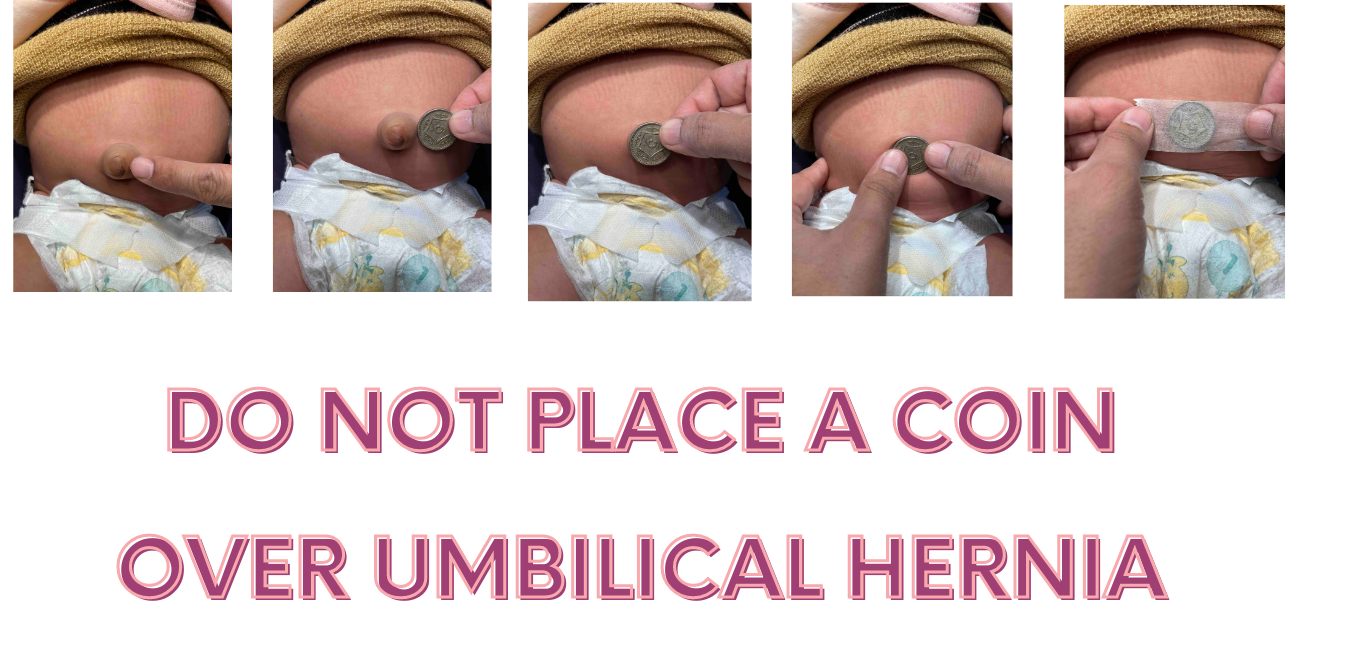Umbilical Hernia
Umbilical Hernia (Belly button hernia or naaf ka hernia) is a commonly seen condition in newborn/infants babies. Its causes, symptoms, presentation, treatment, and surgery of Umbilical hernia (Belly button hernia or naaf ka hernia) is being explained here.
Cause of Umbilical hernia:
When babies are in the womb of the mother, the baby receives nutrition through the umbilicus. Through the umbilicus, there are different veins, and the child receives nutrition through them. These veins come and out of the baby through the umbilicus. After delivery of the baby, the baby starts feeding, and this umbilicus is no more required. So naturally, this ring in the tummy of the baby closes by itself. In some of the babies, after falling off the umbilicus, this ring does not close immediately. This incomplete or delayed closure of the ring leads to Umbilical Hernia (Belly button hernia or naaf ka hernia)Presentation:
These babies/infants usually present as a swelling at the umbilicus. Typically, mothers complain that this swelling reduces in size by itself. Also, its size increases when the baby cries. This is a typical presentation and quite normal for the umbilical hernia.
Diagnosis:
Usually, any pediatrician/ pediatric surgeon can diagnose this condition easily by examination. For this particular condition, we generally don’t advise any X-ray or Ultrasound. However, if some other associated condition is suspected, the doctor may advise some other investigations if needed.Treatment:
For Umbilical Hernia treatment in babies/infants (Belly button hernia or naaf ka hernia), most people understand that it settles by itself. And this understanding is quite right. In most of the babies, it settles by itself over a period of time. However, in some babies, it does not settle. In those few percentages of babies, we wait for 2 years of age. So, If it does not settle till two years of age, then we recommend umbilical hernia surgery for this condition.Frequently asked questions:
Question: Should we apply a coin over Umbilical Hernia (Belly button hernia or naaf ka hernia)?
Answer: Generally, we don’t recommend applying coin over it. This is a condition that usually settles by itself, so there is no need to tie a coin over it. Secondly, sometimes, parents tie the coin over it, and if it is tied very tightly, it may damage the skin.Question: Does my child feel pain because of Umbilical Hernia (Belly button hernia or naaf ka hernia)?
Answer: No, generally, it does not cause pain. However, child feels sever pain if there is an obstructed umbilical hernia. At the same time, newborns and infant quite commonly have colic pains in this age groups. So some newborns cry due to colic pain, and parents feel that pain is due to this hernia.Question: Is there any emergency situation in Umbilical Hernia (Belly button hernia or naaf ka hernia)?
Answer? Yes, if child is having an obstructed umbilical hernia, it is an emergency condition, and you will have to rush to the hospital.Question: Now, how will I come to know whether it’s obstructed or not?
Answer: Generally, parents observe that the size of this swelling increases when the child cries. Similarly, it decreases by itself when the child is quiet. This is normal observation. Perform this 4-step test by yourself and check if it is OK. Generally, for umbilical hernia treatment, we wait and observe. But there are some danger signs. When you observe them, then you must see the doctor immediately:
Generally, for umbilical hernia treatment, we wait and observe. But there are some danger signs. When you observe them, then you must see the doctor immediately:- The child is continuously crying, and the size of the hernia is not reducing.
- He/she is having a larger size of a tummy than routine.
- The child is having vomiting and particularly green colored vomiting.
Also Read:
Fifty Cent Coin on Umbilical Hernia Myth
Should I put a coin over Umbilical Hernia of my Child?
Related Links:
Some FAQ's About Umbilical Hernia
An umbilical hernia isn’t dangerous by itself, but there is a risk that it will get trapped (caught). This can cut off the blood supply to the contents of the hernia, causing life-threatening conditions such as gangrene or peritonitis. If this happens, it’s said to be strangulated.
Call your doctor if your child still has the hernia after turning 2 years old. Call right away if the hernia gets larger or seems swollen, or is hard and sticking out when they are sleeping, calm, or lying down and you can’t push it back in.
Symptoms of umbilical hernia include abdominal pain and tenderness, constipation, fever, full round abdomen with red purple or dark discolored bulge.
For children, umbilical hernias can often be resolved by itself instead of surgery. Adults, however; generally require surgery and gentle exercise during recovery. Umbilical hernias in adults are usually caused by high amounts of pressure on the abdomen
An umbilical hernia is a lump in the navel. It might become more obvious when an infant is laughing or crying, going to the toilet, or coughing. When they are lying down or resting, it may shrink completely.
Avoid fatty food items such as red meat, processed foods, high-fat dairy products, and hydrogenated vegetable oil. These types of food lead to inflammation and an increase in weight that often come with risk of increasing the probability for hernia.
An umbilical hernia repair is a routine surgery, taking about 30-45 minutes. It can be performed as an open surgery or a minimally invasive laparoscopic operation.
